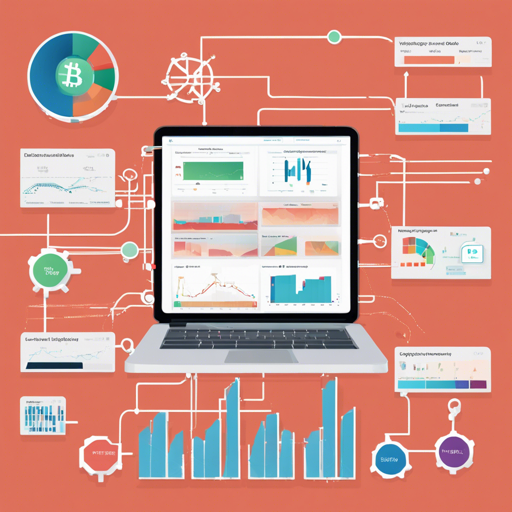In the rapidly expanding world of blockchain technology, data visualization plays a crucial role in understanding complex datasets. This blog will guide you through setting up and using a library of visualization components designed to build an efficient data visualization interface specifically for blockchain datasets.
What are Blockchain Visualization Widgets?
Blockchain Visualization Widgets are reusable components that display data obtained from various blockchains, such as Ethereum, Bitcoin, Tron, Zcash, and more. These widgets are designed to help both developers and non-developers visualize blockchain data without diving deep into programming.
Think of each widget like a lens that allows you to see different aspects of a vast landscape (the blockchain data), helping you focus on what matters most at any given time.
Getting Started
To kickstart your journey with Blockchain Visualization Widgets, you can explore the amazing features of the open-sourced project found at this link. Here, you’ll also find real-time examples to help you visualize how different widgets come together to provide valuable insights.
How to Set Up the Library
- Clone the repository to your desktop:
git clone https://github.com/bitquery/widgets.gitnpm installnpm init -ynpm install webpack webpack-cli --save-devInstalling Additional Packages
You might also want to install the following packages for a more comprehensive setup:
npm install --save graphql apollo-boost vue vue-i18n vue-google-charts vue-loader vue-template-compiler vue-template-loader
npm install --save-dev sass-loader node-sass style-loader css-loader file-loader
npm install --save vis numeral
npm install --save react react-dom isomorphic-fetch graphiql
npm install --save-dev extract-text-webpack-plugin@next
Utilizing the Widgets
Upon successful setup, you can begin using the widgets in your projects. If you are unfamiliar with the GraphQL query language, don’t concern yourself too much – the majority of your tasks can be achieved through the provided examples on the wiki page.
GraphQL acts like a menu at a restaurant – it lets you choose exactly what data you would like to receive without overwhelming you with too many options.
Troubleshooting Common Issues
- If you encounter problems during the installation or setup process, ensure that your npm and node versions are up-to-date.
- Read through the available documentation on the wiki page for guidance on specific errors.
- For any persistent issues, please check the issues section on GitHub for potential fixes or to ask questions.
For more insights, updates, or to collaborate on AI development projects, stay connected with fxis.ai.
Conclusion
Create compelling visualizations easily using Blockchain Visualization Widgets, no extensive programming skills required. Engage with the vibrant community around this open-source project to gain insights and improve your data representation capabilities.
At fxis.ai, we believe that such advancements are crucial for the future of AI, as they enable more comprehensive and effective solutions. Our team is continually exploring new methodologies to push the envelope in artificial intelligence, ensuring that our clients benefit from the latest technological innovations.

